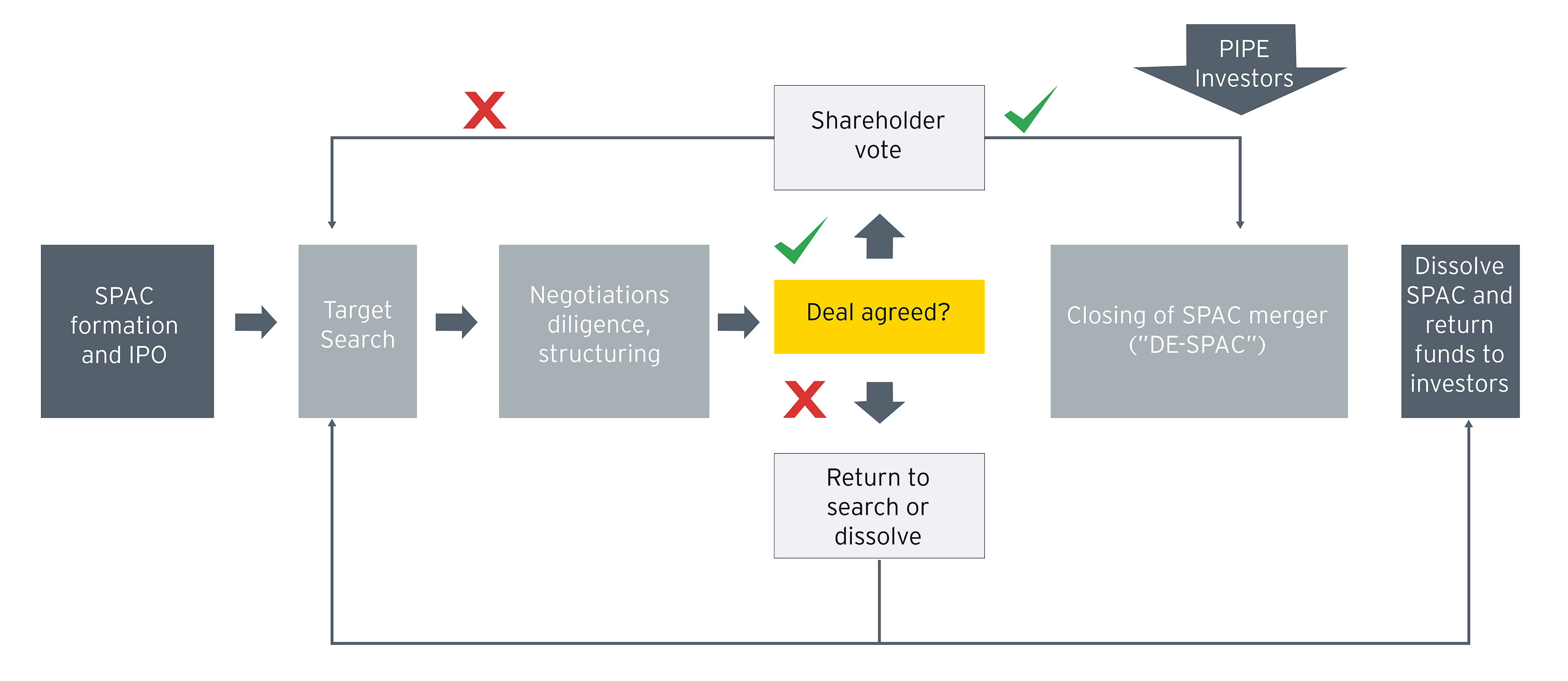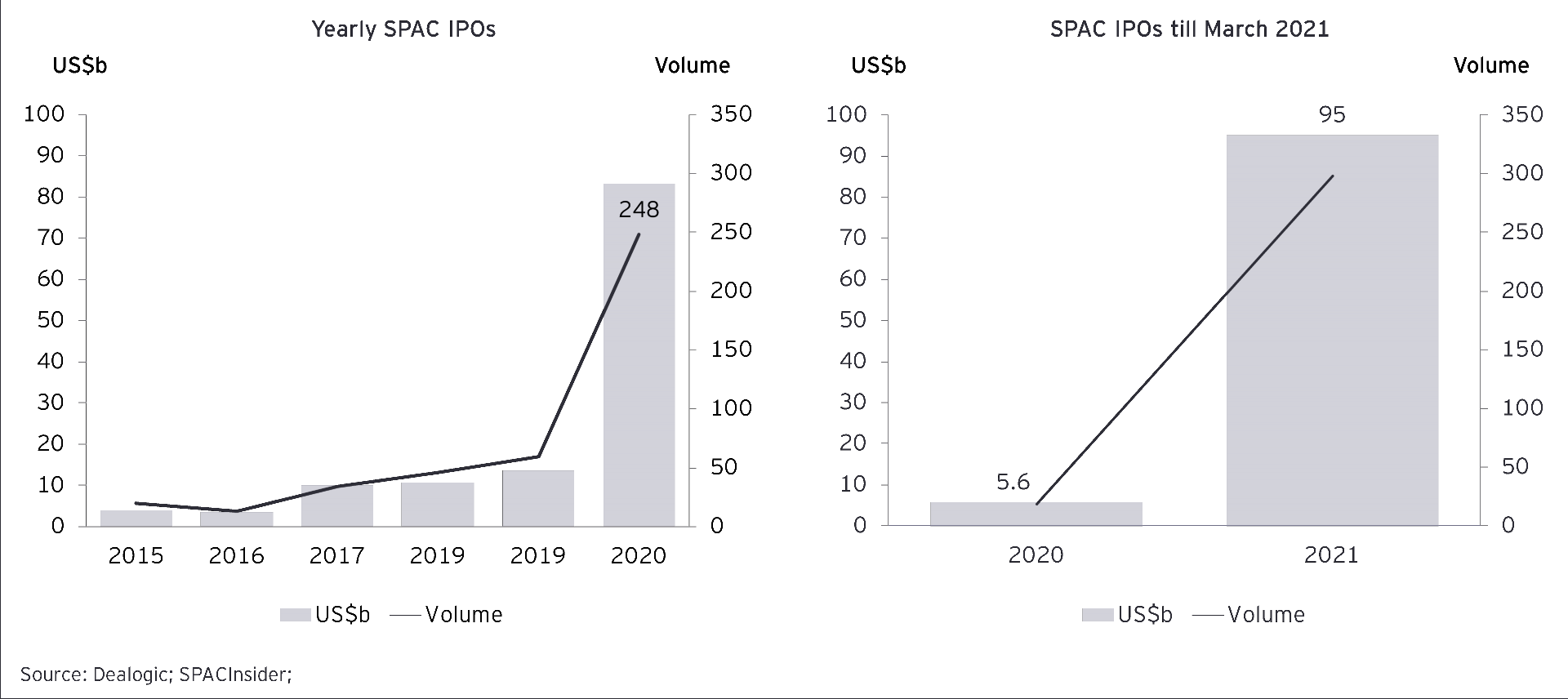The sponsors/management team of a SPAC register the SPAC shares with the Securities and Exchange Commission (SEC) and undertakes a pre-IPO roadshow (presentations to potential investors) and raises capital in a SPAC IPO in exchange for the issuance of SPAC shares that are listed on a stock exchange, commonly at US$10 per share. The money raised by the SPAC in the IPO is held in a trust until the business combination is completed.
Once a target is identified, the SPAC acquires the target (for example, via a consolidation/merger) in a transaction commonly referred as the “de-SPAC” transaction. Where additional funds are required at this stage (for acquisition of target), SPACs could explore raising requisite funds from PIPE investors (refer question 9 below). After a successful de-SPAC, the target company becomes a subsidiary of the SPAC or a new holding company whose shares are listed on the stock exchange.
If a SPAC is unable to complete a de-SPAC transaction within the prescribed period, the investors' money raised in the initial SPAC IPO is returned to investors and the SPAC dissolves.
Jurisdictions of SPACs incorporation
The jurisdiction in which a SPAC aims to be listed is a factor in deciding the jurisdiction in which the SPAC is incorporated. US-listed SPACs could be incorporated in the US or other jurisdictions, as US laws permit companies incorporated outside the US (for instance, Cayman Islands) to be listed on US stock exchanges.
Benefits to the parties involved
Benefit to the sponsor for floating a SPAC
Sponsors generally purchase equity in the SPAC at more favorable terms than investors in the IPO. After the de-SPAC transaction, the sponsor generally holds about 20% stake in the post-IPO SPAC, which would have been obtained for a relatively nominal consideration. This holding would eventually be converted into respective stake in the target’s business. This becomes the sponsors’ primary motivation in finding an attractive target with immense potential value.
Benefit to a target and its shareholders / promoters from a SPAC deal
One of the key advantages to a target company is the reduction in time and effort to go public and the associated costs. Regular IPO underwriter fees usually correspond to 7% of the total IPO proceeds. In the case of a SPAC deal, these costs are generally lower, relative to the size of the de-SPAC transaction.
More importantly, SPACs may help companies go public without being subject to complexities of the market, such as multiple investor negotiations, underwriter negotiations, valuation uncertainty and overwhelming documentations and filings. SPAC structures are also a compelling opportunity for companies to access a wide pool of investors through the expertise of seasoned professionals, in the form of sponsors (also refer question 17 below).
For promoters/shareholders, the potential of unlocking value for the company on a securities market and thereby receiving multiplied returns on exit could be a driving factor.
What is a PIPE investment and how do PIPE investors benefit from a SPAC deal?
PIPE stands for private investment in public equity. It involves issuing shares of a public company in a private arrangement with a select investor / group of investors. In the context of SPACs, a SPAC could seek PIPE investment if it needs to raise additional capital for the acquisition of a target company. By way of market convention, PIPE investments happen only after a target is identified (generally, PIPE investment coincides with the proposed business combination of target). Accordingly, PIPE investments usually happen at valuations that take into consideration the combined value of the SPAC and target’s business.
Recent Trends
Number of SPACs
According to sources, in the recent past (since 2015) there have been over 700 SPAC IPOs. In 2020 alone, close to 250 SPAC IPOs were executed. The trend only seems to be expanding, as over 300 SPAC IPOs were seen in the first three months of 2021 (as against less than 20 SPAC IPOs in the first three months of 2020).





